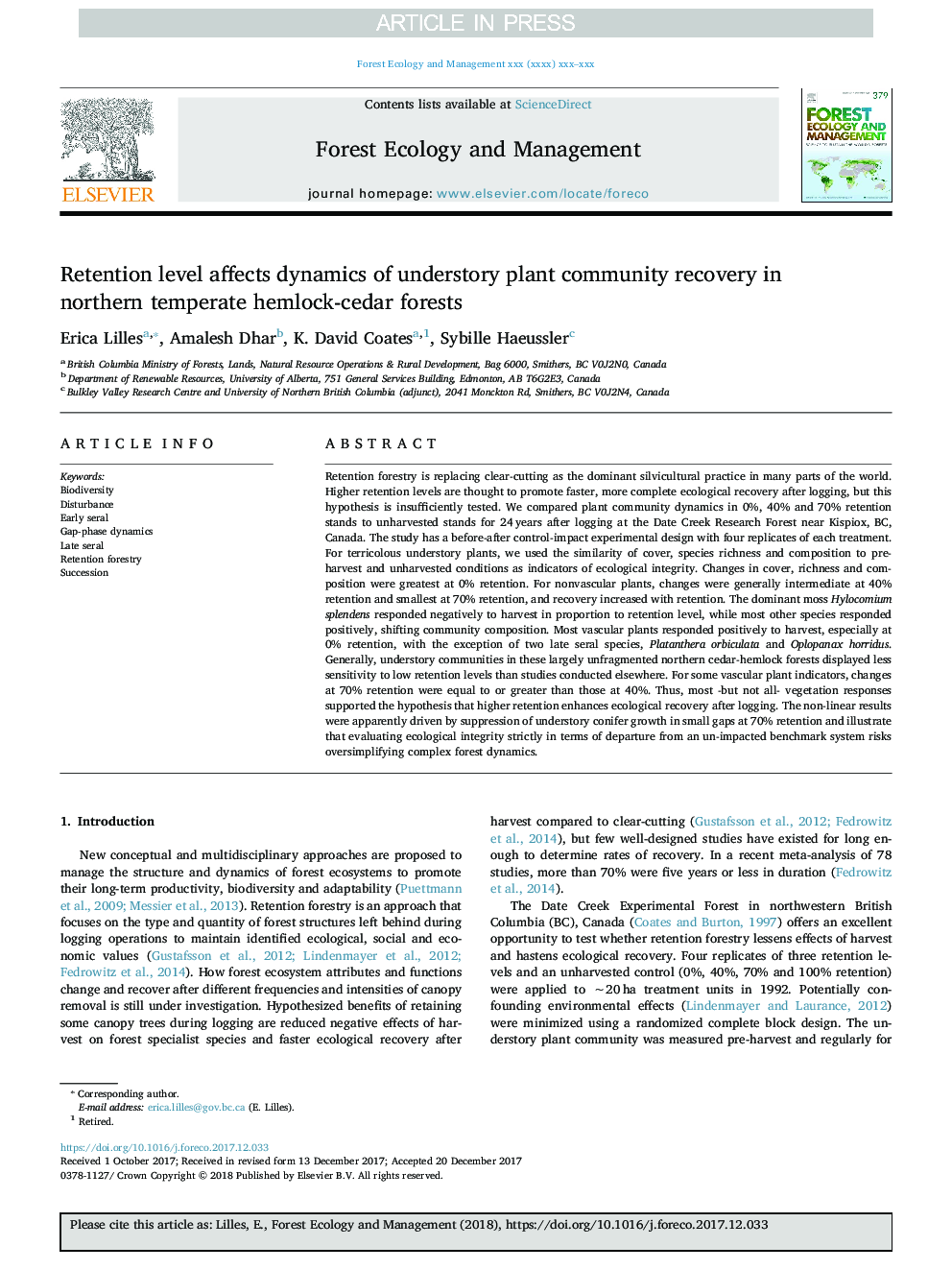| Article ID | Journal | Published Year | Pages | File Type |
|---|---|---|---|---|
| 6541684 | Forest Ecology and Management | 2018 | 13 Pages |
Abstract
Retention forestry is replacing clear-cutting as the dominant silvicultural practice in many parts of the world. Higher retention levels are thought to promote faster, more complete ecological recovery after logging, but this hypothesis is insufficiently tested. We compared plant community dynamics in 0%, 40% and 70% retention stands to unharvested stands for 24â¯years after logging at the Date Creek Research Forest near Kispiox, BC, Canada. The study has a before-after control-impact experimental design with four replicates of each treatment. For terricolous understory plants, we used the similarity of cover, species richness and composition to pre-harvest and unharvested conditions as indicators of ecological integrity. Changes in cover, richness and composition were greatest at 0% retention. For nonvascular plants, changes were generally intermediate at 40% retention and smallest at 70% retention, and recovery increased with retention. The dominant moss Hylocomium splendens responded negatively to harvest in proportion to retention level, while most other species responded positively, shifting community composition. Most vascular plants responded positively to harvest, especially at 0% retention, with the exception of two late seral species, Platanthera orbiculata and Oplopanax horridus. Generally, understory communities in these largely unfragmented northern cedar-hemlock forests displayed less sensitivity to low retention levels than studies conducted elsewhere. For some vascular plant indicators, changes at 70% retention were equal to or greater than those at 40%. Thus, most -but not all- vegetation responses supported the hypothesis that higher retention enhances ecological recovery after logging. The non-linear results were apparently driven by suppression of understory conifer growth in small gaps at 70% retention and illustrate that evaluating ecological integrity strictly in terms of departure from an un-impacted benchmark system risks oversimplifying complex forest dynamics.
Related Topics
Life Sciences
Agricultural and Biological Sciences
Ecology, Evolution, Behavior and Systematics
Authors
Erica Lilles, Amalesh Dhar, K. David Coates, Sybille Haeussler,
